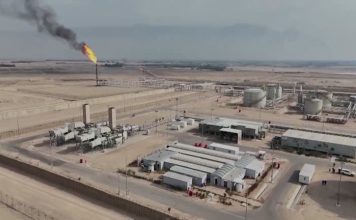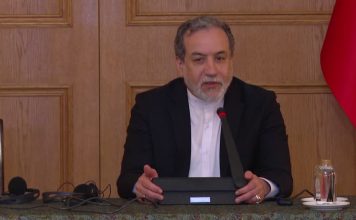April 6 (Reuters) – Iran and the United States have begun indirect talks meant to bring both countries back into full compliance with the 2015 nuclear deal that Washington abandoned three years ago.
Here are some details about the talks.
What are the talks about?
Tehran and Washington are, via intermediaries, discussing how to revive the deal that Iran agreed in 2015 with six world powers – the United States, France, Britain, Russia, Germany and China.
Under the accord, Iran agreed to limit its nuclear activities in exchange for the lifting of U.S. and other economic sanctions.
The deal was intended by the six powers to make it harder for Iran to develop a nuclear weapon. Iran says it has never sought nuclear weapons and never would, and that its nuclear activity has only civilian aims.
Why are talks happening now?
Former President Donald Trump pulled the United States out of the 2015 accord in May 2018 after long opposing it and seeking to wreck it. He reimposed the U.S. sanctions and added more. Iran responded by steadily overstepping the accord’s limits on its nuclear programme.
President Joe Biden, who succeeded Trump in January, has said he wants to restore the accord if Iran resumes compliance. He says this is the best way to constrain Iran‘s nuclear ambitions.
What does Iran want?
Iran wants all U.S. sanctions lifted at once, and has said it will not accept anything less. It has ruled out a gradual, step-by-step easing of the sanctions.
The sanctions have crippled Iran‘s economy, partly by cutting its vital oil exports, and have caused growing discontent in the country over economic hardship.
Iran has already instructed its oil ministry to prepare installations for production and sale of crude oil at full capacity within three months, if U.S. sanctions are lifted, state media said in December.
It is estimated that Iran now exports less than 300,000 barrels of oil per day (bpd), compared to a peak of 2.8 million bpd in 2018.
A lifting of U.S. sanctions would open the way for international companies to return. Under the U.S. sanctions, they face a ban from doing business in the United States if they do business in Iran.
What do world powers want?
The United States and its allies want the Islamic Republic to comply fully with curbs on its nuclear programme that they say would make the world a safer place.
The 2015 accord limits the level of fissile purity to which Iran can enrich uranium, obliges Tehran to allow more intrusive oversight of its nuclear facilities by U.N. inspectors, and places a cap on Iran‘s stock of enriched uranium.
U.S. Secretary of State Antony Blinken has said that if Iran returns to the accord, Washington will then seek to build a “longer and stronger agreement” that deals with other “deeply problematic” issues.
Biden, who was part of the U.S. administration under Barack Obama that negotiated the 2015 deal, has said these issues would include Iran‘s development of ballistic missiles and its support for proxy forces in countries such as Iraq, Syria, Lebanon and Yemen. Iran has ruled out negotiations on such issues.
Who has to move first at talks?
Iran says the United States must take the first step by lifting sanctions. A U.S. official told Reuters that Washington would be “pragmatic” and not let the matter of who goes first be an obstacle.
How quickly could Iran build a nuclear bomb?
The 2015 accord’s restrictions on Iran’s atomic work had the aim of extending the “breakout time” for Tehran to produce enough fissile material for a bomb, if it decided to make one, to at least a year from about two to three months.
Estimates vary on how long it would take Iran to build a bomb now. Blinken said in January that the breakout time had fallen to three or four months. Israel’s energy minister said in February it was around six months.
(Writing by Timothy Heritage Editing by Mark Heinrich)







